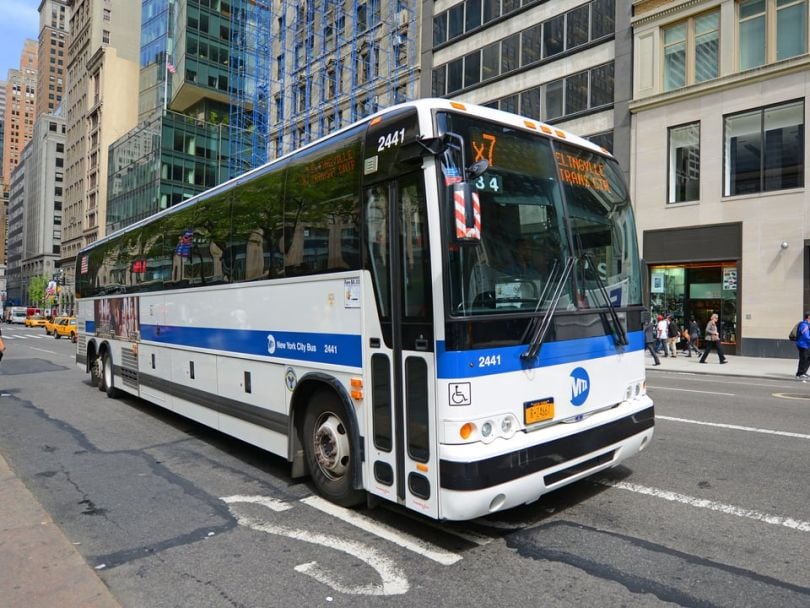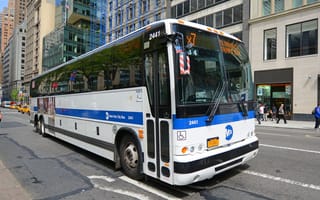
No matter how you commute — be it by train, bus or private chauffeur — it would be impossible to deny that New York City’s transit systems have become increasingly sluggish.
City residents have been pushing for improvements for years, and recent changes, in the form of both technology and policy, indicate that those voices are finally being heard.
Buses get their due
With an average speed of seven miles per hour, our town is officially home to the slowest bus system in the nation.
In order to combat this dreary statistic and improve the lives of those chalking up the city’s 1.9 million daily bus rides, Mayor Bill DeBlasio recently introduced his Better Buses Action Plan. The plan aims to improve bus speeds by 25 percent over the next year.
In addition to creating new bus lanes and incentivizing delivery drivers to make more overnight deliveries, the DOT will be implementing a unique signalling device that has been proven to speed up buses enough to meet the mayor’s lofty goals.
Transit Signal Priority, or TSP, is a combination of software and hardware that enables traffic signals to switch or remain green when a city bus is approaching — giving the “priority” to public transit over regular vehicles, and allowing them to better adhere to timely schedules.
The city has already installed TSP technology at 594 intersections, impacting 12 different bus routes. But advocates both in and out of city hall are encouraging the DOT to do more — and fast.
“The importance of using technology to improve the ease of taking public transportation cannot be overstated,” said Matt Caywood, co-founder and CEO of transit startup TransitScreen, who believes streamlining and increasing public transportation usage will be a critical part of combating carbon emissions.
Still, installing TSP remains a more complicated process than simply slapping a sensor on a hubcap. In order to get TSP in working condition, the DOT must thoroughly study traffic patterns at a given intersection, then TSP software and sensors must be installed on both buses and traffic lights. It’s a delicate task — you certainly wouldn’t want an erroneous green light to pop on during rush hour.
TSP is a great sign for the MTA’s future
The MTA has long outsourced its innovation, with critics claiming this to their detriment. A 2016 feature from Rockaway’s newspaper The Wave points to major delays and overspending caused by New York State government’s decision to outsource the bulk of labor in Hurricane Sandy repair efforts. More recently, the L Train has been caught in a gridlock of ideas as the city can’t seem to determine who is responsible for engineering the much-needed fixes.
New York City’s TSP solution, to the contrary, was developed in house by the MTA’s engineering team. Its effectiveness proves that when the MTA invests in its own in-house technical expertise, great things can happen.

What’s next for straphangers?
As always, though, the real focus remains on NYC’s subway system, which carries more passengers than any other local mode of transportation — 5.3 million trips are taken each day.
Professor Andrew Coggins of Pace University laid out some of the unique challenges facing the MTA:
“The [NYC subway] system is over 125 years old and composed of different routes that were originally competing private companies,” he said. “Other than the Second Avenue subway and the 7 Train extension, there have been no new lines for over 50 years.” And while long-deferred issues are finally being addressed, Coggins said, “there is still a long way to go if New York’s transit is to evolve to be on par with other major cities like Berlin and Tokyo.”
According to Coggins, many of the largest issues revolve around station infrastructure, which is a point on which NYC has much to learn from cities like Hamburg, Germany and Hong Kong.
But while legislators are battling out budgets in Albany, startups are doing their part to make commutes ever-so-slightly less hellish. Caywood and his aforementioned company TransitScreen work to build smart city tools that help people access transit information. It provides info to users on the go, without the use of a smartphone or internet connection, via publicly displayed screens placed everywhere from transit terminals to office lobbies and schools.
“Information about when the trains are coming or which trains are delayed being available earlier than in the station would be a huge difference for commuters,” said Caywood, adding that commuters might run or catch a different train if they get a heads up.
TransitScreen technology is already used in parts of the MTA system, but Caywood envisions a future where this information is available everywhere — which would be especially impactful for New Yorkers without smartphones.
Getting creative
While NYC’s public transit can’t be fixed overnight (bummer), the local technology community has proven its potential to make commuters’ lives easier. And a similar spirit of innovation can be felt across the country, with cities like Los Angeles using phone location data to (successfully!) help increase bus ridership, and Denver pushing transportation as a focal point of local politics.
NYC has long set the stage in national tastes. When it comes to public transportation, it seems like it might be time for the Big Apple to sit back and take a few notes.



